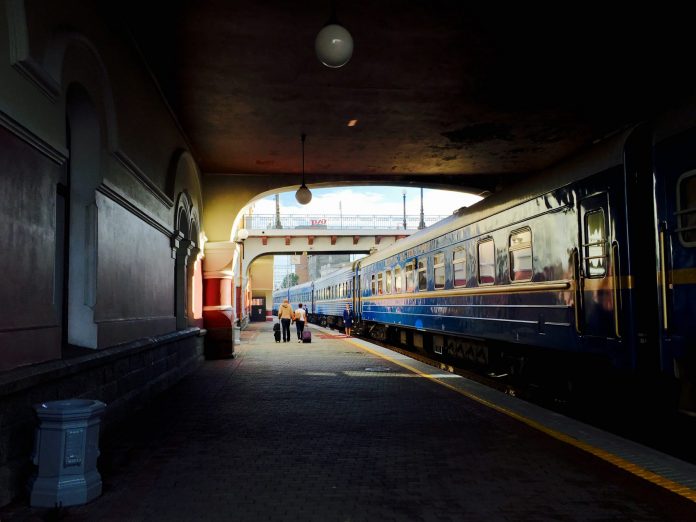The world’s longest railway traverses the Asian continent. In celebration of its 101 years, we explore the legacy of the iconic Trans-Siberian Railway
Text Sophie Ibbotson
Photos Annie Ling
The Orient Express has the literary cache, and India’s Palace on Wheels has the opulence, but the greatest train journey on Earth is without doubt the Trans-Siberian Railway. For more than 100 years, locomotives – first steam trains, then diesel and electric engines – have run the 9,289 kilometres between Moscow and Vladivostok on the Sea of Japan. The world’s longest railway crosses seven time zones and the journey takes at least a week to complete.
Those yet to travel through Siberia might think of the route as bleak, but as one fortunate to have ridden the rails the full length of the line, I know it to be a place of stark natural beauty and unexpected geographical diversity. Looking back on the Trans-Siberian’s first century, its construction required vision, determination, and a gamble that technology would catch up fast enough to enable the project’s completion. It is one of the world’s great masterpieces of engineering, a tribute to the men and women who conceived, designed, and built it.
The Origins of the TRANS-SIBERIAN
The history of railways in Russia dates back to 1837, just eight years after George Stephenson invented his Rocket. The first line linked Saint Petersburg and the imperial palace at Tsarskoye Selo, 16 kilometres away. Though it was seen as a something of a toy, it was quickly followed by lines from Saint Petersburg to Moscow, Warsaw and, on a more challenging scale, the Trans-Caspian Railway, linking Russia with its newly gained territories in Central Asia.
In 1860, the Treaty of Beijing granted Russia land in the Far East, including what would become Vladivostok. The Russians were acutely aware, however, that they had no means of defending this territory should the Chinese decide to repossess it. The Great Highway only reached as far as Nerchinsk and was, in any case, impassable for at least five months of the year. Few of the rivers were navigable, even in summertime. A railway was the obvious solution.
Construction of the TRANS-SIBERIAN Railway
Tsar Nicholas II inaugurated the construction of the Trans-Siberian Railway in Vladivosktok in 1891. The Russian government estimated the cost would be £35 million (equivalent to around USD4.5 billion today), and to cut the construction time, they planned to work on all seven sections simultaneously.
The building of the railway was beset by problems from the very beginning. Construction began before surveying was complete, so the chosen route included unanticipated geographical challenges, which were expensive to overcome. There was a drastic shortage of skilled labour, as some 62,000 men were needed. Conscripted soldiers had to be brought in to make up the shortfall. Substandard materials were used to cut costs, and materials had to be brought thousands of miles across the taiga, in extreme climatic conditions. For much of the route, the tracks had to be laid across permafrost. Trains ran along each section as it was completed, which made the transportation of labour and materials easier.
Before the Trans-Baikal section was completed, Lake Baikal posed a particular obstacle. In the winter, rails were laid across the ice on the lake so that the trains could continue on their journey. When the ice melted in spring, however, the trains had to be broken into sections and loaded onto ice breaking train ferries. The Trans-Siberian was completed as a single track railway line in October 1916, a matter of months before the Russian Revolution. The Czechslovak Legion took control of the railway and used heavily armoured trains to support the White Russian forces, although they would ultimately be defeated by the Bolsheviks.
The Second World War
By the 1920s, it was already apparent that the build quality of the Trans-Siberian was inadequate; the civil war had also taken its toll. Improvements had to be made to make it fit for purpose, and they enabled the Trans-Siberian to play an essential role in WWII.
For the first two years of the war, the Soviet Union was neutral. Raw materials for the German war effort were shipped from Japan to Europe via the Trans-Siberian. In the other direction, thousands of Jewish refugees escaped first to Vladivostok, and then across the Pacific to America. When Germany invaded the Soviet Union in 1941, causing the Soviets to join the war on the Allied side, the railway was used to move Soviet troops and to relocate vital factories to the Urals, where they could continue to operate.
The TRANS-SIBERIAN Today
At 101 years old, the Trans-Siberian Railway still plays an essential role in connecting vast swathes of Russian territory. Huge amounts of freight travel the line, including one-third of all Russia’s exports; it is also the sole means of long-distance travel for thousands of domestic passengers living inland, far from airports.
The railway also tops many tourists’ bucket lists, and understandably so. Long distance train travel still has an air of romance about it, and there’s a great deal
to see along the way, from lakes, mountains, and forests, to museums, churches, and opera houses. The cheapest way to make the journey is travelling aboard the Rossiya, the scheduled service from Moscow to Vladivostok. The ride is uncomfortable, however – the food isn’t great, and it’s difficult to get off the train to sightsee: the timetable waits for no one!

Riding the TRANS-SIBERIAN
Waiting on the platform in Vladivostok, there’s a tremendous sense of anticipation as the train pulls into view. In the winter months when the snow lies deep on the platform, it’s accompanied by the stamping of feet and clouds of warm breath. The train rolls to a standstill, the doors swing open, and the carriages disgorge passengers and luggage.
On-board, you quickly become used to the perpetual motion of the train and the dull clunking of the wheels as they thud round and round. Personal space comes at a premium, but as you do an ungainly two-step with fellow passengers in the carriage vestibule, it’s undoubtedly with a smile. You learn not to fill your teacup too full, nor to walk whilst carrying a glass of wine. After the first night, you look forward to being rocked like a baby into a deep and dreamless sleep.
The views from the train are ever changing, whether you’re stood by the door with the window halfway down, or sat looking out through the picture window in your cabin. Dense forest gives way to emptiness; you cross mighty rivers; there are painted wooden villages and dachas, substantial cities, and forgotten stations where the train never stops. Lake Baikal, the oldest and deepest lake in the world, and a UNESCO World Heritage Site, is the indisputable natural highlight of the route, but there are man-made attractions, too. A Soviet-era submarine-turned-museum stands beside the suspension bridge in Vladivostok. Irkutsk has its little wooden houses and painted churches. The Opera and Ballet Theatre in Novosibirsk – the Siberian Coliseum – is the largest theatre in Russia. And in Yekaterinburg you’ll find more than 30 museums. Siberia is not, and never has been, empty. It was only inaccessible.
For more stunning stories and photos, check out Asian Geographic Issue 125.




![The Road to Independence: Malaya’s Battle Against Communism [1948-1960]](https://asiangeo.com/wp-content/uploads/2021/07/WhatsApp-Image-2021-07-26-at-11.07.56-AM-218x150.jpeg)






